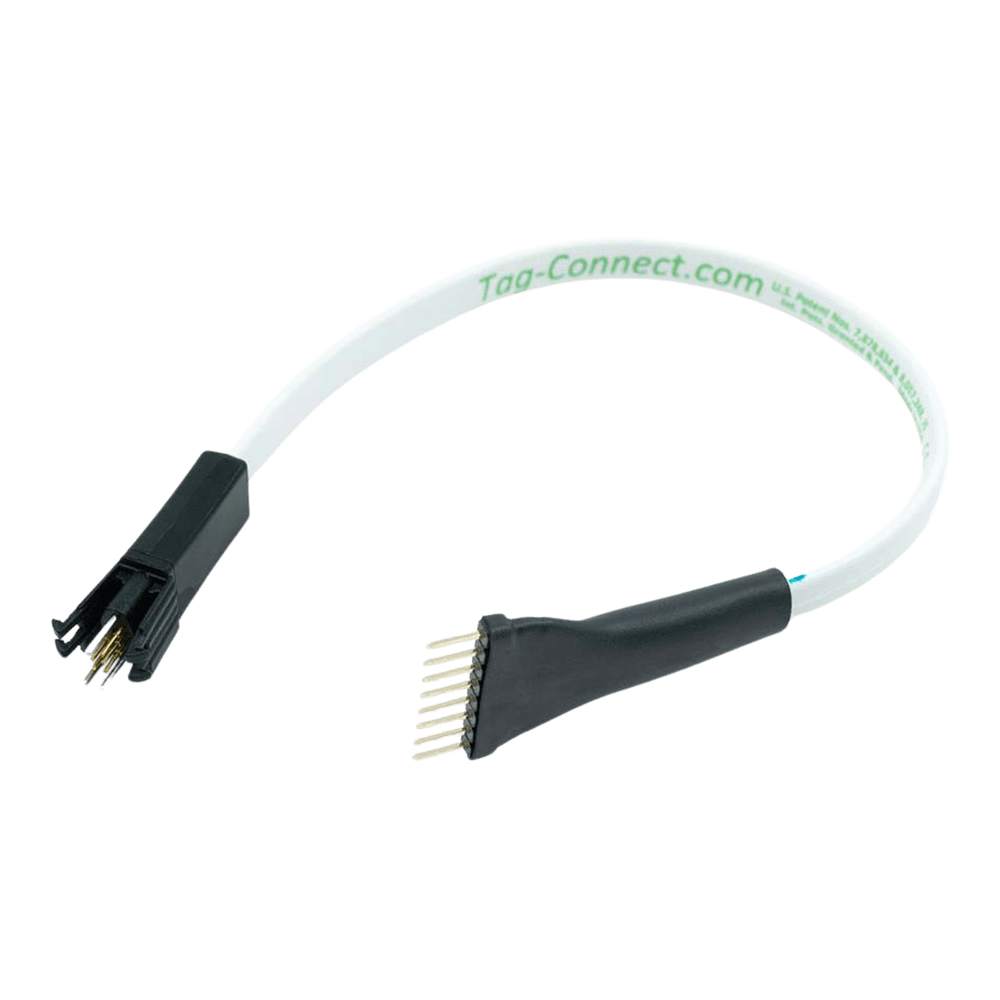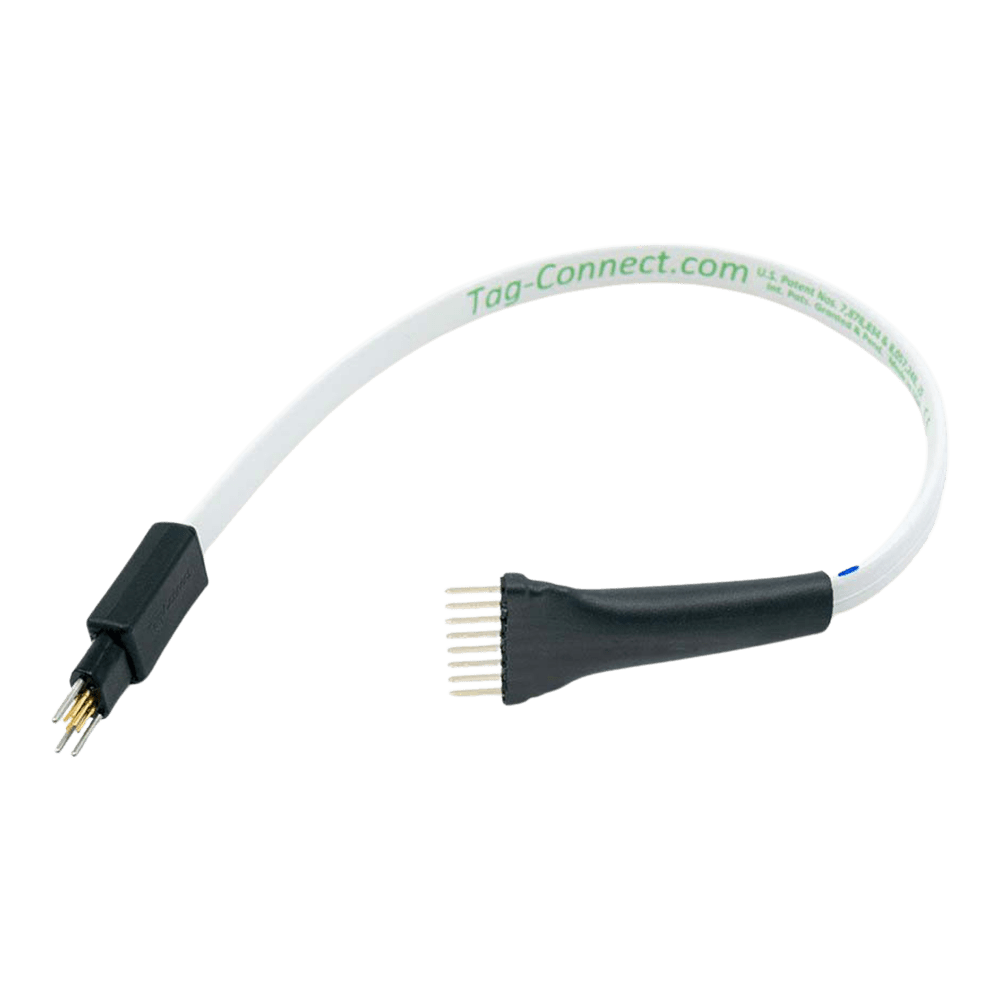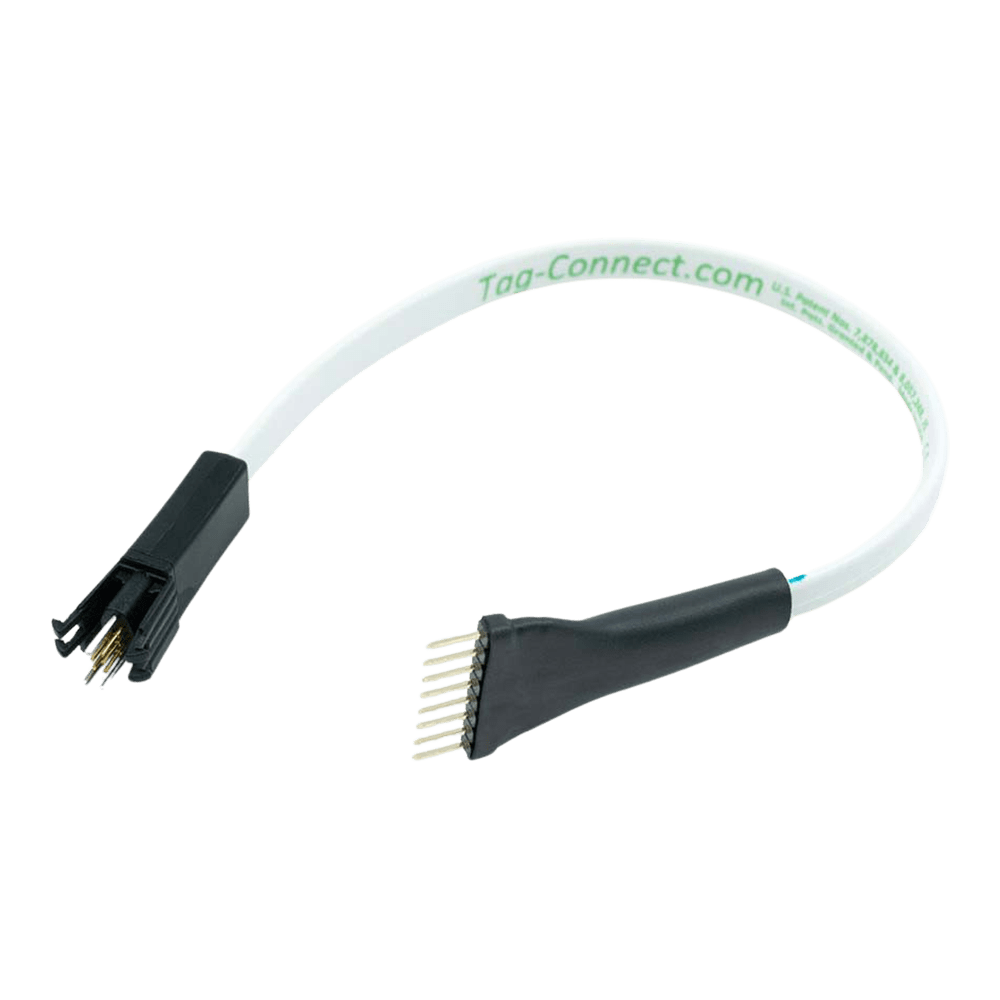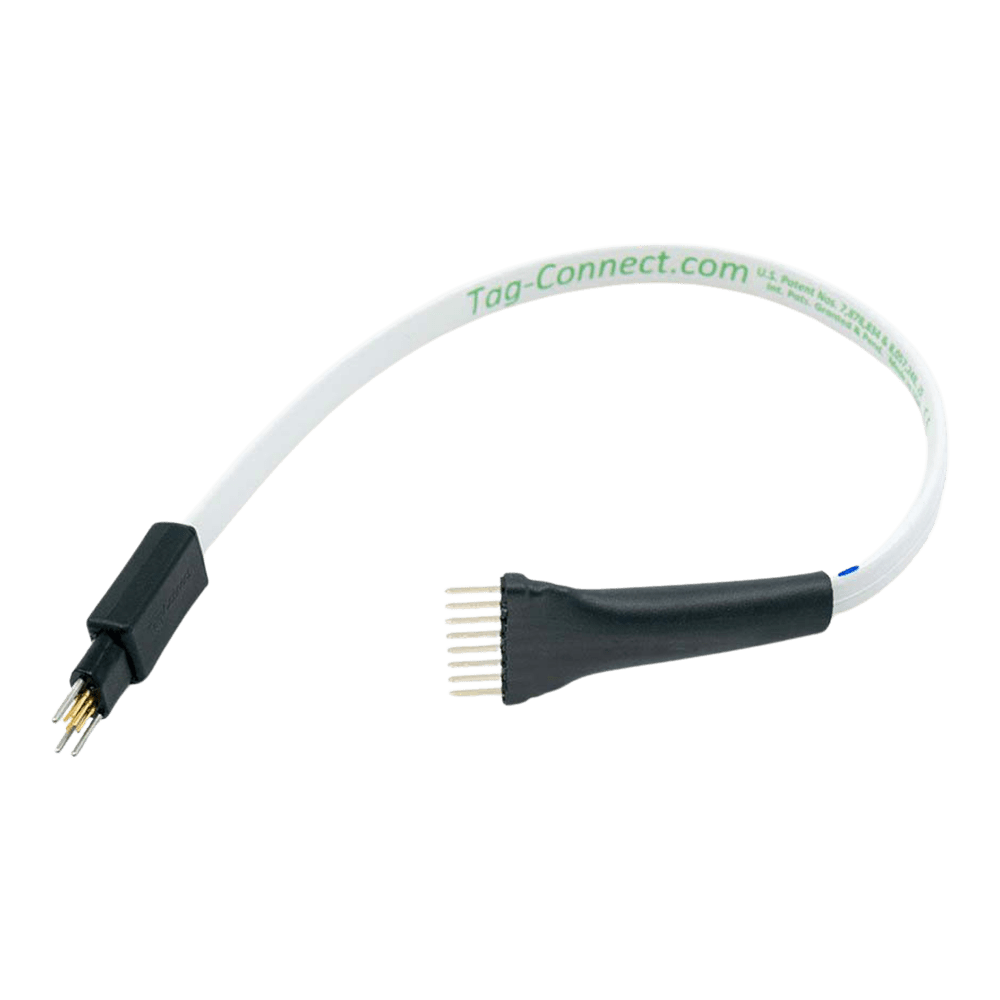

Key Features
Overview
The TC2030-PKT-SWD represents the optimal solution for ARM Cortex debugging workflows, combining Tag-Connect's proven pogo-pin technology with specialised SWD protocol support. Unlike standard programming cables, this variant features an 8-pin SIP connector specifically designed for the PICkit 4, PICkit 5, and SNAP debugger SWD requirements.
The cable excels in both development and production environments. Its spring-loaded contact pins ensure reliable electrical connections, whilst the four plastic retention legs provide secure PCB attachment for extended debugging sessions. The compact TC2030 footprint requires minimal PCB real estate—approximately the size of an 0805 resistor.
Compatible with TC2030-CTX ARM Cortex cables and shares the same PCB footprint as TC2030-PKT-SWD-NL no-legs variant for flexible production workflows.
Downloads
Why Engineers Choose The Tag Connect TC2030-PKT-SWD 6-Pin SWD Programming Cable
Eliminates PCB Connectors
Reliable SWD Connections
Development Efficiency
Professional SWD Programming Solution for ARM Cortex MCUs
The TC2030-PKT-SWD cable provides a reliable connection for programming and debugging SAM ARM Cortex microcontrollers using Microchip PICkit 4, PICkit 5, or SNAP debuggers. This specialized cable features an 8-pin SIP connector designed specifically for SWD (Serial Wire Debug) protocol.
Wiring Quick-Start
Connect the cable to your PICkit 4/5/SNAP by aligning Pin 1 of the TC2030-PKT-SWD with Pin 1 of the debugger's 8-pin connector. The cable automatically maps SWD signals to the correct pins:
| Signal | PICkit 4/5/SNAP Pin | TC2030 Pin | Function |
|---|---|---|---|
| NMCLR/RESET | 1 | 3 | Target reset control |
| VDD VIOREF | 2 | 1 | Voltage reference |
| GND | 3 | 5 | Ground connection |
| SWO | 4 | 6 | Serial Wire Output |
| SWCLK | 5 | 4 | Serial Wire Clock |
| SWDIO | 8 | 2 | Serial Wire Data I/O |
PCB Footprint Requirements
The TC2030 footprint requires a compact 7.0 × 4.0 mm area on your PCB with six contact pads and four leg retention holes. The spring-loaded pogo pins make reliable contact with the PCB pads, whilst the four plastic legs clip securely into matching holes for hands-free operation during extended debugging sessions.
Ready-to-Run Code Example
Connect your SAM MCU for immediate programming:
// Configure SWD pins in your PCB design // Pin 1 (VDD): Connect to MCU VDD // Pin 2 (SWDIO): Connect to MCU SWDIO // Pin 3 (RESET): Connect to MCU RESET // Pin 4 (SWCLK): Connect to MCU SWCLK // Pin 5 (GND): Connect to MCU ground // Pin 6 (SWO): Connect to MCU SWO (optional)| General Information | |
|---|---|
Part Number (SKU) |
TC2030-PKT-SWD
|
Manufacturer |
|
| Physical and Mechanical | |
Weight |
0.1 kg
|
| Other | |
EAN |
5055383665303
|
Frequently Asked Questions
Have a Question?
-
Does the cable provide target power?
No, the cable carries power reference signals only. Your target board requires independent power supply, though the debugger can provide limited power for very low-consumption applications.
-
How many programming cycles can the cable handle?
The pogo pins are rated for over 100,000 insertion cycles under normal use conditions. In practice, the ribbon cable typically requires replacement before pin wear becomes significant.
-
Are there any cable length limitations for signal integrity?
The standard cable length maintains excellent signal integrity for SWD frequencies. Longer variants are available for specific applications requiring extended reach in test fixtures.
-
What's the maximum programming frequency supported?
The cable supports the full SWD frequency range of compatible PICkit debuggers, typically up to 18MHz depending on target MCU specifications and PCB design quality.
-
Can I switch between legged and no-legs versions on the same PCB?
Yes, the TC2030-PKT-SWD-NL no-legs version is compatible with the same PCB footprint, allowing flexible use of legged cables for development and no-legs for production programming.
-
How does this compare to traditional debugging headers?
Tag-Connect eliminates the connector component cost (typically £1-3 per board) and reduces PCB space requirements by approximately 80% compared to standard 10-pin ARM debugging headers.
-
What PCB footprint modifications are required?
The TC2030 footprint requires six contact pads and four retention holes in a 7×4mm area. No special PCB finishes are needed—standard HASL or ENIG work perfectly with the pogo pin contacts.
-
Does the cable work with both development and production programming?
Yes, the TC2030-PKT-SWD excels in both environments. The retention legs provide secure connection for development work, whilst the reliable pogo pins handle high-volume production programming requirements.
-
Can I use this cable with STM32 microcontrollers?
No, this cable is specifically designed for SAM ARM Cortex MCUs with Microchip debuggers. For STM32 debugging, consider the TC2030-CTX series cables with appropriate adapters.
-
What's the difference between TC2030-PKT-SWD and standard TC2030-PKT cables?
The TC2030-PKT-SWD features an 8-pin SIP connector specifically designed for SWD protocol on PICkit 4/5/SNAP debuggers, whilst the standard TC2030-PKT has a 6-pin connector for traditional PIC programming.


